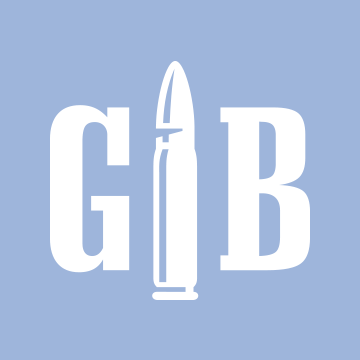I'm now reading The Deer Hunter's Bible by George Laycock. 1986. Doubleday
I'm now on the chapter on shotguns. For thick brushy cover and in the South with traditional hound pushes, they make all the sense in the world. Teddy Roosevelt even said the shotgun was the ultimate weapon for brush country deer. Dog-drive deer often bound out of the woods into the hunter's stands and there is no time to monkey around with the precise aim a rifle needs. Autos and pumps are ideal but double-barrel guns are not for deer. They tend to fire criss-cross from one barrel to the other. The gun has to be quickly mounted and swung as on birds. The neck is the prefered target for the load of buckshot on a running deer. I really don't understand the method of lead used when swinging on deer. When buckshot is used for gettting venison, how should loads be selected for hunting and what choke should be used? Is patterning a scattergun even needed for deer season? The book says that the ideal deer shotgun gauges are 12 or 16 and that 20 might not be adequate even for Foster slugs. George's book is a tad outmoded so these days there is the wonderful Savage 220 bolt slug gun in 20 ga. for effective deer shooting in bushy cover and woods as opposed to open fields, but with soft recoil like a .243 rifle. Speaking of .243 Winchester rifles, the book in the previous rifles chapter says they are for open shooting and not in brush as the 100-gr. bullet is frangible if it strikes low, thick vegetation. .243 can be used in woods, as forests and groves, where low cover, since it doesn't exist there, won't get in the way of a clear shot between tree trunks. But I digress. Scoped 12 ga. pumps with slugs can be punishing however. What sucks is that shotguns in Iowa are not even allowed until after the 1st of December unless one has a disability permit to shoot any weapon earlier on for the season. If that were the case, I would opt for a slug gun like the Savage 220.
Here is a video for an Iowa deer 1st Shotgun season hunt in DECEMBER without any snow on the ground yet! Even cold-sensitive me could handle that as long as the earth ain't covered powder white. During Iowa "shotgun" seasons, even .350 Legend rifles are allowed.
![Image]()
I'm now on the chapter on shotguns. For thick brushy cover and in the South with traditional hound pushes, they make all the sense in the world. Teddy Roosevelt even said the shotgun was the ultimate weapon for brush country deer. Dog-drive deer often bound out of the woods into the hunter's stands and there is no time to monkey around with the precise aim a rifle needs. Autos and pumps are ideal but double-barrel guns are not for deer. They tend to fire criss-cross from one barrel to the other. The gun has to be quickly mounted and swung as on birds. The neck is the prefered target for the load of buckshot on a running deer. I really don't understand the method of lead used when swinging on deer. When buckshot is used for gettting venison, how should loads be selected for hunting and what choke should be used? Is patterning a scattergun even needed for deer season? The book says that the ideal deer shotgun gauges are 12 or 16 and that 20 might not be adequate even for Foster slugs. George's book is a tad outmoded so these days there is the wonderful Savage 220 bolt slug gun in 20 ga. for effective deer shooting in bushy cover and woods as opposed to open fields, but with soft recoil like a .243 rifle. Speaking of .243 Winchester rifles, the book in the previous rifles chapter says they are for open shooting and not in brush as the 100-gr. bullet is frangible if it strikes low, thick vegetation. .243 can be used in woods, as forests and groves, where low cover, since it doesn't exist there, won't get in the way of a clear shot between tree trunks. But I digress. Scoped 12 ga. pumps with slugs can be punishing however. What sucks is that shotguns in Iowa are not even allowed until after the 1st of December unless one has a disability permit to shoot any weapon earlier on for the season. If that were the case, I would opt for a slug gun like the Savage 220.
Here is a video for an Iowa deer 1st Shotgun season hunt in DECEMBER without any snow on the ground yet! Even cold-sensitive me could handle that as long as the earth ain't covered powder white. During Iowa "shotgun" seasons, even .350 Legend rifles are allowed.




